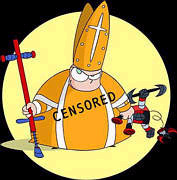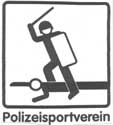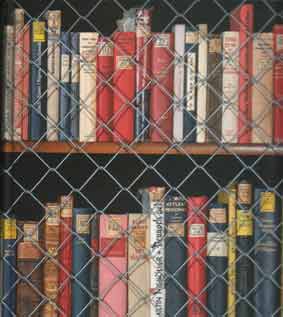| Roland Seim
Censorship Shall Not
Take Place - Even in Popular Culture?
An Introduction to the Current Situation
in Germany.
Dear colleagues, dear audience,
first of all I would like to thank the Goethe-Institut and Dr
Norbert Spitz very much for the friendly invitation to the wonderful
city of Beirut. I am very honored to give this key note lecture
for our symposium.
I apologize not to make a free speech on free speech. But it's
better to read good than to speak bad English.
Abstract: My paper
deals with the issue of free speech versus censorship. It shows
us some cases of interdicted media objects and explains the conflicts
of free expression. Furthermore it examines both the impact of
censorship and the fascination of banned objects. The censors
and fans of such material are bonded together in a kind of a symbiotic
relationship. The paper shows that restrictions are accepted by
the majority but proves both intolerable and fascinating for the
fans of the bizarre. While banning explicit material may be ineffective,
it clearly delineates socio-cultural boundaries and renders standards
of our media use explicit in this controversial debate.
"If liberty means anything at all, it means the right to
tell people what they do not want to hear", George Orwell
wrotes in Animal Farm.
Every society has its own sensitivities, taboos,
boundaries, and degrees of freedom. So, the difficult topic "freedom
of media, art and expression versus censorship" is not only
a problem of dictatorships or fundamentalistic regimes. This text
wants to explore, that even Western democracies try to gain influence
against unwanted contents, although it is not so politically violent
as in other regions.
Some of the main questions are: Is there censorship in Germany,
and if, how does it work? Does it make sense? Which topics are
forbidden? Why is banned material so fascinating?
The most constitutions guarantee the right of personal freedom
and free expression of opinion as a result of the Enlightenment,
written down in the Universal Declaration of Human Rights in 1948,
the Lebanese politican Charles Malik was a co-author of. (Art.
19: "Everyone has the right to freedom of opinion and expression...").
In Germany Art. 5 of our "Basic Law" (1949) promises:
Art is free, and, a censorship shall not take place.
But, how tolerant can we be when faced with intolerance? What
about hate speech, pornography, media violence, right-wing extremist
or terrorist propaganda, blasphemy, xenophobic slander, libels
and so on, even when they occur in literature or in a work of
art in a wider sense? This is a complicated issue. German constitution
tries to resolve this dilemma by installing some restraints: "These
rights are limited only by the regulations of general law, legal
regulations on the protection of juveniles and the rights of personal
honor." Many sections of the German criminal code forbid
the named offences. Every state and government, even if open-minded
and liberal, restrict offensive contents more or less by law.
The problem is, how to draw juridically the line between art and
crime. Are jurists and judges really able to define what art is
and what should be allowed in culture?
A censor, the dictionary informs us, is an official who examines
books, movies, etc., for the purpose of suppressing parts deemed
objectionable on moral, political, military, religious, or other
grounds. Technically speaking there are external and internal
kinds and three methods of censorship, I call it "weapons
of mass media destruction":
1. Pre-censorship: Prior restraint and preclearance; deleting
or softening material before broadcasting or publishing. This
occurs in the several self-regulation boards of the movies, PC-games,
television and so on.
2. Self-censorship: the internalization of the "scissors
in your head" to avoid trouble is difficult to prove, because
we have no comparison between the original and the reducted version.
Mostly a type of economic censorship.
3. Post-censorship: after publication, objectionable material
can be put on the index by the Bundesprüfstelle (Office for
the Control of Publications Harmful to Youth), or can be totally
banned by court including seizure and confiscation. Restrictions,
however, are in force for the more than 80 million citizens of
Germany. Any individual can institute legal proceedings against
dubious media products at any youth welfare department. All bans
are mentioned in the lists of the official organ "BPjM Aktuell".
The Censors and Their Objects
Censorship can be understood as a kind of cultural regulation.
As with any other reasonable measure, censorship must try to balance
the claims of the common good against the claims of individual
freedom. In general, censorship as a mandatory requirement depends
on the commonsensical application of contemporary community standards,
mentality, and conventions; in particular, it is implemented according
to the taste and character of individual readers and viewers.
But even the censors act on their own subjective tastes to prevent
feared anti-social attitudes and actions when they assess the
intention and the possible effects of cultural objects they examine.
Even a few objectionable sequences or pages that epitomize, so
to speak, the bad-taken out of context-could be sufficient to
ban an entire film or book. But there are at least two sides to
everything. One person's obscenity is another person's bedtime
reading. Art or morbid filth? Finally, it's a question of practical
ethics and aesthetics as to whether one accepts and permits or
condemns and banishes crass descriptions of the physical aspect
of the body for example.
Most intrusive censorship is supported as taking place in the
interests of protecting young people. These censors are likely
convinced that they are performing a positive service to society.
They have to believe that no social system-even a pluralistic
democracy-can allow their members total and absolute freedom of
informational interchange or they could not do their work.
Insofar as the criteria censors use to distinguish between prohibition
and permissible tolerance are in flux, censoring authorities must
rely on all sorts of tacit assumptions of propriety in assessing
how to do their work. Even today in the liberated time of a postmodern
"anything goes" climate, the government feels the necessity
to put the 'kabosh' on the free flow of certain kinds of information.
Decision makers must cope with the problem of determining what
would be harmful to minors or might endanger social stability.
Many laws prohibiting modes of expression in literature, films
and other media thought to be depraved or corrupt are currently
deemed valid, but the application of these laws may be questionable.
Even if there does not exist a major official or state-supervised
agency concerned with pre-censorship in Germany as the Securité
Générale (at least until 2005) in Lebanon, many
authorities closely scrutinize the limits of liberty. Only the
FSK (Freiwillige Selbstkontrolle der Filmwirtschaft), the German
voluntary self-regulating Board of Film Classification, performs
a pre-censorship assessment because all movies are required to
be submitted before their first showing.
Above all, the courts and the so called "Bundesprüfstelle
für jugendgefährdende Medien - BPjM" (a unique
federal Office for the Control of Publications Harmful to Youth)
can take action against disapproved items by putting them on its
index to prevent minors from coming into contact with possibly
harmful material. They remain at least for 25 years on it, before
cancelled ex officio. Special committees with from 3 to 12 mostly
honorary members of socially-relevant interest groups, such as
churches, youth welfare organizations, teachers, publishers and
distributors decide if an item should be placed on the index.
As we shall see, it's a two-headed monster because some fans of
censorable material use the index as a kind of shopping list.
What nearly nobody knows: About 15,000 videos, books, comics,
records, computer games, Internet contents, and so on are restricted
by virtue of being on this black list. These items therefore are
forbidden to minors because some censors deemed that viewing such
material would result in "social-ethic disorientation"
or wrong moral concepts due to explicit obscenity, sex, drugs,
violence, occultism, encouragement of suicide, or political extremism.
Indexed things may not be advertised or sent via the mail. Most
media content that is banned, comes from foreign countries, in
the area of literature for example were put on the index: Bret
Easton Ellis' American Psycho, William S. Burroughs' Naked Lunch,
Dan Kavanagh's (Julian Barnes) Duffy, and Timothy Leary's Politics
of Ecstasy. All these bans pose challenges for fans of interdicted
items.
Additionally about 600 books, films, records etc. are totally
banned in Germany even for adults according to a court decision.
Even if Article 5 of the German Constitution establishes freedom
of speech, many criminal and civil laws limit the possibilities
of free expression. The reasons for prohibition are varied, such
as: Hard core pornography under § 184 Criminal Code (about
200 objects banned), glorification of violence under § 131
(about 300 objects banned), libel or hate speech under §
130 (about 120 objects banned, especially Nazi propaganda and
the so called "Auschwitz lie"). Any judge can make his
own decision as what is to be banned nationwide for "antisocial
harmfulness" (in German: "sozialschädlich").
But every isolated case is a matter for interpretation and many
questionable decisions are inevitably made. The most recent case
of a book ban by the Federal Constitutional Court refers to Maxim
Billers novel "Esra". It gets forbidden because of violating
the personal rights of the turkish protagonist, the author's ex-girl
friend, because of describing intimate details of their relationship.
The main ground for book and record banning in Germany is Nazi
propaganda, and I think this exception to the right to freedom
of speech might be reasonable: More than hundred publications
and records are forbidden for xenophobic incitement, hate speech,
right-wing extremism, race hatred, vengeance theories of a Jewish
conspiracy, or because they question the Holocaust or German war
guilt. Showing the swastika is proscribed in popular cultural
circumstances, except in clearly anti-fascistic purposes.
But even manuals for self-defense, like many books from the US
publishers Paladin Press and Loompanics, have been seized by Canadian
and German authorities, for example "Homemade Explosives",
although it is "sold for informational purposes only".
In the USA those books were unrestricted available because of
the First Amendment; in Germany, they have been banned since 1991
because they contain instructions on how to commit criminal offenses.
But I guess, after 9/11 especially the USA are more restrictive
concerning titles as "Terrorist's Handbook" or "Anarchist's
Cookbook". Security wins over free speech.
But it is questionable to condemn virtual reality artworks or
the artificial fantasy world of the movies, literature and comics.
Concerning motion pictures, the violation of human dignity by
the depiction of graphic violence is the main reason for prohibition.
Let me show you some examples of films that are prohibited in
Germany: The Evil Dead by Sam Raimi has been banned in Germany
since 1984. The censors passed this film only in an edited R-rated
form), Halloween Part 2 (produced by John Carpenter), Phantasm
(Don Coscarelli) and Braindead (Peter Jackson).
Music is no less subject to censorship than any other form of
artistic expression. In the Eighties a lot of heavy metal records
and covers were put on the index for violence. Some confiscated
records are: Butchered at Birth (by the death metal band Cannibal
Corpse) because of violent cover artwork, and Eating Lamb (by
the US-Punk-Band NOFX, 1996) because of the depiction of sexual
intercourse with an animal. The band issued two different versions
of cover art. The LP version Eating Lamb was banned in Germany
in 1996 because of "bestiality" ("sodomistic porn"),
however the similar illustrated CD Heavy Petting Zoo was not.
Currently, the explicit lyrics of rap music are under discussion
because they advocate violence against women, show no dignity
for people, and play down drug abuse. Dozens of titles are on
the index. But silencing, even of music, is a world-wide problem.
A special case is the Internet, which is not as free as you might
think. All websites, that are put on the German index (about 1,500,
but this list is confidential and will not published since 2003),
were filtered out and can not be found via search engines like
google.de. Governments argue, that the Cyberspace shall not become
a kind of lawless parallel-universe, so, monitoring and blocking
takes place if needed. To catch terrorists, authority wants to
implement a so called "federal trojan horse" on private
computers for official online searches.
The Current Situation of Ambiguity
"Censorship happens whenever some people succeed in imposing
their political or moral values on others by suppressing words,
images, or ideas that they find offensive" says Marjorie
Heins (p. 3). Censorship always has a Janus-face. It creates an
odd scenario of ambiguity. On the one side, the government and
many pressure groups try to suppress unacceptable media content
within the bounds of human rights and constitutional law regarding
freedom of speech, art and press. On the other side, forbidden
things become rather attractive to many fans because of the specific
thrill of interdiction. Michel Foucault once said that a ban makes
a book valuable. This two-faced phenomenon of repressive control
versus self-determination of mature users raises questions about
how fans on the one side put into practice their fascination with
breaking the taboo and, on the other side, why and how censors
ban the items they select.
Let me go back to some basics reflections:
We are socialized by the different kinds of mass media that shape
our view of life and influence our behavior. Socio-cultural experiences
and associations do condition our opinions and preferences. Moreover,
the contents of media are to some extent a kind of refractive
mirror of society. How tolerant or restrictive we treat media
reveals to us a significant part of our current socio-political
situation and moral beliefs. But neither the official picture
of the mainstream culture nor the research that often criticizes
the portrayals of sex and violence in the media to justify control
and censorship reveal the behavior of people who are fascinated
by banned (and often strange) contents.
But even these materials are part of the cultural landscape, although
they get rarely into the focus of academic interest, despite the
fact that a huge number of theoretical studies have been written
especially by jurists and social scientists. What is the quarrel
between censorship and free speech all about? How are these deviant
products of the media used by which kind of consumers in their
everyday lives, and why are these items "media-worthy"
for them? And, what point of view do the censors have? What is
at stake in banning dubious contents, and what is at stake in
allowing the free flow of uncensored media?
The Fascination of the Banned
The consumer has more rights to purchase what he or she wants
than the producer has rights to spread his ideas, because the
laws (and the risks) have always been aimed primarily at directors,
authors, publishers or editors. In other words, the law does not
forbid consumers from reading banned books or watching banned
films (except child porn, possession of which alone is criminal)
if you find or own one. However, sale and trade is prohibited
so these items could be confiscated and the producers or distributors
punished.
Violent media contents and latent sexualization seem to be quite
common now. In the Fifties this issue of "Simplicissmus"
- a German satire magazine - was punished for obscenity. Early
sex educational books as "Helga and Bernd" had to show
their item in a self-censored way. Today people are exposed to
a constant stream of more or less questionable items. Cable networks,
videotapes, computer games, and the Internet offer the possibility
of getting anything you want. Anonymity ("Pretty good Privacy")
and encryption technology ("FreeNet" or "TOR")
could neutralize the ability to wiretap and to censor. In this
confusing area, an index is unintentionally, of course, a point
of departure helping some fascinated individuals to select what
are probably the most exciting offers. Reading an index is like
looking into an area that moralists see as the blackest depths
of the human soul and the farthest reaches of society's underground.
Already the disreputable circumstances and the feeling of doing
something forbidden thrill and entice the fan. The motivation
for getting curbed stuff may vary, but like a "Pavlovian
Reflex" every authoritarian restriction on the publication
and distribution of suspicious material inflames the desire among
fans of the banned to know what one shouldn't know.
The mainstream with its social definitions of good taste, impose
taboos and speech codes that become predictable and boring to
the connoisseurs of the really thrilling stuff. They crave unfiltered,
unfettered gore, so they set out searching for the suppressed.
Banned films, books, comics, records and so on strongly attract
the buffs who want to test the limits and explore the 'dark side'
as a patterned evasion. Most of these fans may come from the middle-class,
and are young and male. Research shows, that juvenile peer groups
that come together for horror film watching sessions reflect elaborate
codes of knowledge of film aesthetics and special effects and
sophisticated interchange and involved behavioral style. Taste
and habitus are not class-specific.
The notion of resistance, the fascination with violating taboos
held by many young people is independent from official orders,
rules and regulations concerning matters of taste. If a case of
dubious suppression occurs, the public debate regarding the principles
of free speech and human rights is dramatized for a short time
in the feature pages, although most of those writers have apparently
not seen or read banned material.
Beside the superstructure of the official opinion of political
correctness and judicial bans, which mainly are approved by the
"moral majority", there are many sub-cultural scenes
where groups try to counteract the authorities and their blocking
strategies. In Germany many lovers of deviant, profane media feel
that the state is making up their minds for them. Barred objects
become rather fascinating to many collectors of the weird, who
want to know what the State suppresses. For those inquisitive
persons every ban is a cue (signal) and every index serves as
a compelling shopping list with the special incentive of the taboo
to savor the forbidden fruit, a special prohibited and therefore
hard-to-get rarity. The hunt for trophies.
In negating the act of banning, alternative ways of procuring
materials, along with several strategies of circumventing the
bans, have emerged, for example re-issues under false names, pirated
editions and bootlegging on the black market, or imports of foreign
versions. More open-minded and liberal countries such as the Netherlands
or Belgium, where nearly no media censorship exists, became very
appealing to fans. I would guess that it's impossible to eradicate
a film if some copies survive, especially as Internet downloads.
Prohibition demands obedience, not understanding. Censorship demonstrates
the power of the rulers, and, from the fans' point of view, deprives
them of their own free will eliciting their resistance.
Conclusion
"Every taboo deals with an awakening to the dilemma of curiosity
about something both attractive and dangerous," Roger Shattuck
wrotes in his book Forbidden Knowledge.
We have found a complex situation among certain interest groups
that some people may identify as an aberration from the normal
use of the media, although the provocative topic of "eros
and thanatos" is as old as culture itself. But the dialectical
process linking ethics, moral reasoning and society are perpetually
in tension over the issues of personal freedom vs. social responsibility.
This essay concludes with a consideration of issues that enter
into the debate on how divided and diverse societies decide what
is permissible to broadcast.
The censors depend in their decision to cover, cut or prohibit
special interest films, books etc. on a majority, who either agree
or is indifferent. The examiners of the diverse governmental offices
feel that they are just doing their jobs in the name of public
mental hygiene. They often exhibit a sense of tedium regarding
matters of taste, decency and hallowed icons. Most censors adopt
a taken-for-granted, unreflective approach and do not recognize
that their work depends on a variable "Zeitgeist", shifting
boundaries of discretion, and changing values. When conventional
tastes change they just find new codewords to obscure their underlying
notions of moral and political decency.
On the other side there are the inquisitive fans who feel compelled
to evade restrictions. In their view censorship is an undemocratic
instrument of control. More importantly, it provides a way for
them to experience some form of otherness. Censorship creates
contra-cultural fandoms of people who are exhilarated by the act
of negating what are actually minor proscriptions.
Of course, some regulating curbs may be necessary, especially
on media contents that might constitute a "clear and present"
danger.
You may ask, what is at stake in banning this filthy material?
Well, who can decide for future generations which kind of media
content is unworthy? One characteristic of censorship is that
it is mundane and tacit so that its sphere of influence can be
inconspicuous extended. The consequence could be that a few judges
routinely decide what all others will be allowed to receive. But
the voices of dissent still need to be heard, particularly those
that are rarely found in the power positions of mainstream media.
Cultural history suggests that formerly banned things often convey
a sense of the everyday thinking and acting of the common people.
That is, what is viewed as degraded, unworthy culture in an era
may be more indicative of mundane lives than high culture and
superior art, which reach only a small elite portion of the population.
I submit that an emancipatory practice might be a better way to
master the problems posed by deviant, disturbing or dangerous
content. In order to enhance the media competence/literacy and
the power of discernment of both the fans and the censors, new
ways of understanding sensitive materials are needed. A reasonable
use of control and regulation (bans for instance in the cases
of child porn or hateful, aggressive Nazi propaganda; restrictions
of violent and explicit material in the name of the protection
of young people) is ok in my view, but most of the other prohibitions
are not emancipatory, and, by the way, won't work. To blame media
for social ills (for example the massacre at Littleton High School)
and to demand restrictions is to take the easy route. Of course,
people's behavior and social interactions with others are not
only regulated through laws. Many social norms and everyday practices
facilitate the social life of mankind. Censorship is not the only
way to instill and regulate norms by official actions, but it
is the most simple and discernible effort to accomplish this.
But since imposed restrictions often have the opposite effect,
it is possible that censorship serves more to convince the public
that aberrance is being restrained and that cultural values are
being preserved than it is to actually prevent access to material.
Tolernce and informal human kinds of social control on the face-to-face
level of everyday life are more sensible constraints on the damaging
use of bizarre items as long as interpersonal processes are effective.
"The threat of censorship is real. Laws can also be counterproductive.
For some, they may only serve as labels to heighten curiosity",
says Otto Larsen (p. 95). If bans were removed, novelty would
wear off and satiation would eventually set in. However, a postmodern
scenario of an over-stimulated population with complete access
to uncensored sex, violent media content, offensive and actionable
symbols and racist speech is not desirable. Mysteries are exciting.
Showing everything to everybody could not only be quite dangerous
for the continued existence of society (as the censors fear),
but it would be rather boring for all the trash seeking "truffle-pigs".
But there is no fear of that.
In my opinion, for the most part censorship is obsolete in a global
society, and a helpless attempt of governments and pressure groups
to deal with overtaxing situations. Finally, even ethical reasoned
censorship is a political matter of power. However, German censorship
can not be compared easily with arabian "arriqaba",
this discussion may have showed. We censor contents, not people.
It's more or less a kind of a sportsman's game, not an existential
threat to live.
Possibly in some respects censorship may be not only bad; it may
help us to keep the discussion about human values, the changing
"Zeitgeist", necessary boundaries and the meaning of
culture at all alive. And by the way: The history shows, that
censoring or banning of art, expression and the media has contrary
effects: it arouses our curiosity and heightens the degree of
fame. It's a contradictory affair: The more censors ban, the more
it becomes interesting.
Thanks for your kindly attention. Shukran.
References:
- Green, Jonathon: The Encyclopedia of Censorship, Facts On File,
New York 1990.
- Heins, Marjorie: Sex, Sin, and Blasphemy. A Guide to America's
Censorship Wars, The New Press, New York 1993.
- Larsen, Otto N.: Voicing Social Concern: The Mass Media - Violence
- Pornography - Censorship - Organization - Social Science - The
Ultramultiversity, University Press of America, Lanham 1994.
- Post, Robert C. (Ed.): Censorship and Silencing. Practices of
Cultural Regulation, The Getty Research Institute for the History
of Art and the Humanities, Los Angeles 1998.
- Robertson QC, Geoffrey: Freedom, the Individual and the Law,
Penguin Books, London 1993, 7th Edition.
- Seim, Roland: Zwischen Medienfreiheit und Zensureingriffen.
Eine medien- und rechtssoziologische Untersuchung zensorischer
Eingriffe in bundesdeutsche Populärkultur, Diss. phil. (thesis),
Univ. of Münster, Telos Verlag, Münster/Germany 1997.
- Shattuck, Roger: Forbidden Knowledge. From Prometheus to Pornography,
St. Martin's Press, New York 1996.
Author's Note:
Born in 1965 in Münster, Germany, Roland Seim studied art
history, sociology and philosophy in Münster and Berlin,
and received 1993 an M.A. degree in art history with a thesis on Alfred
Kubin's depiction of "eros and thanatos". In 1997 he
received his Dr. phil (Ph.D.) in sociology at the University of Münster/Germany
with a doctoral dissertation on censorship in German popular culture.
He is a publisher (www.telos-verlag.de), author and was a part-time lecturer
at the Univ. Münster.
Zur Datenschutzerklärung

To
the author's site
|
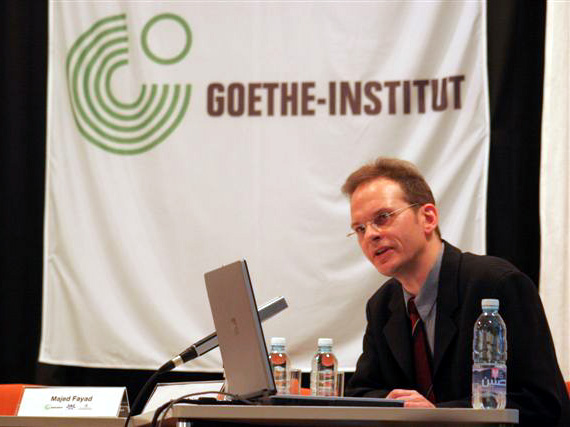
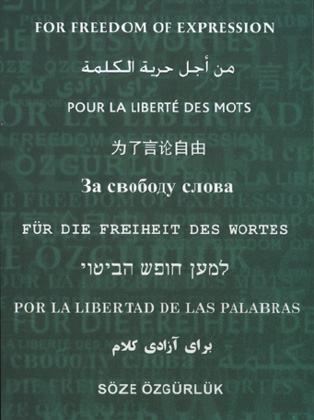 1
1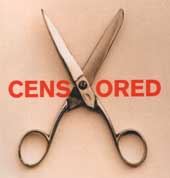
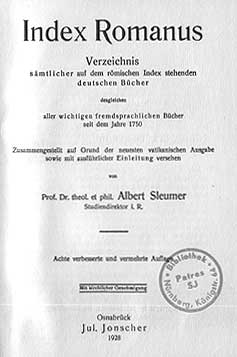
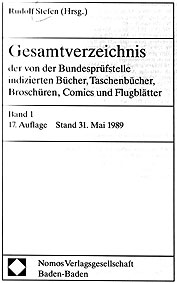 2
2
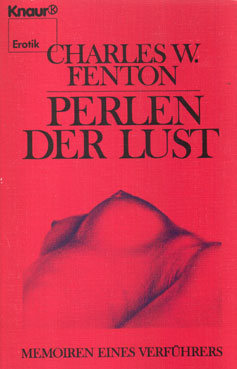 3
und 4
3
und 4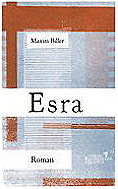
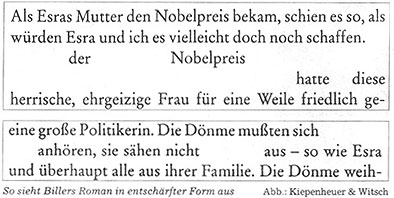


 7
7  8
8 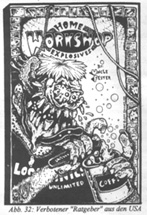 9
9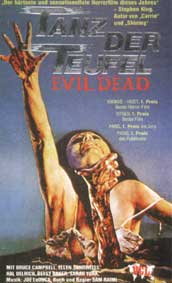 10
10 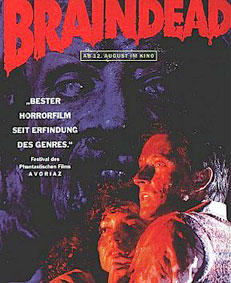 11
11 12
12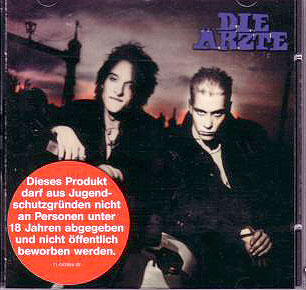 12a
12a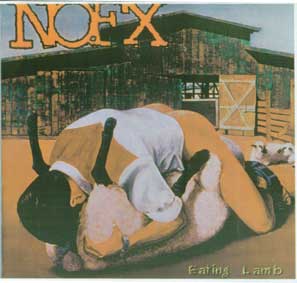 13
13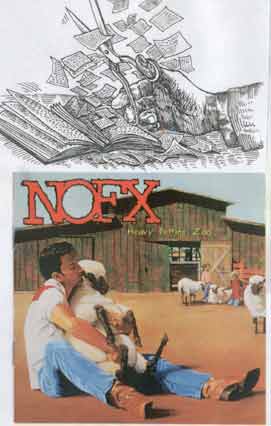 14
14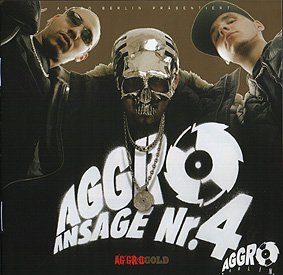 15
15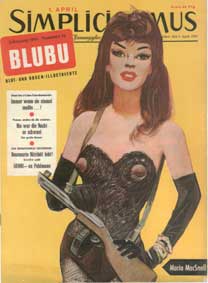 16
16 17
17 18
18